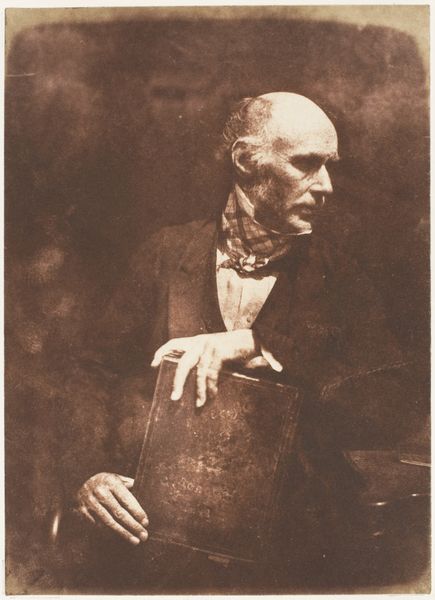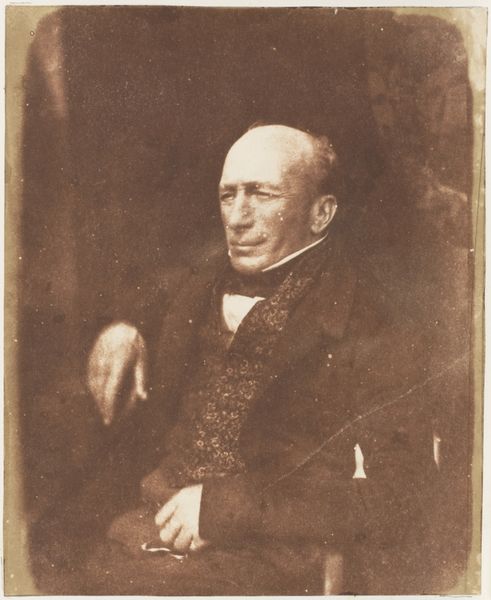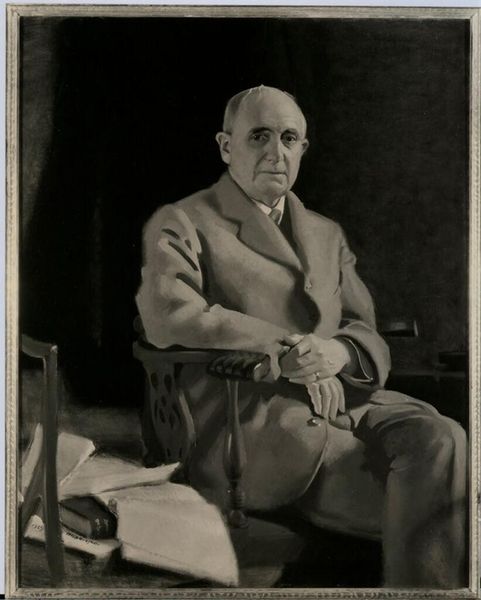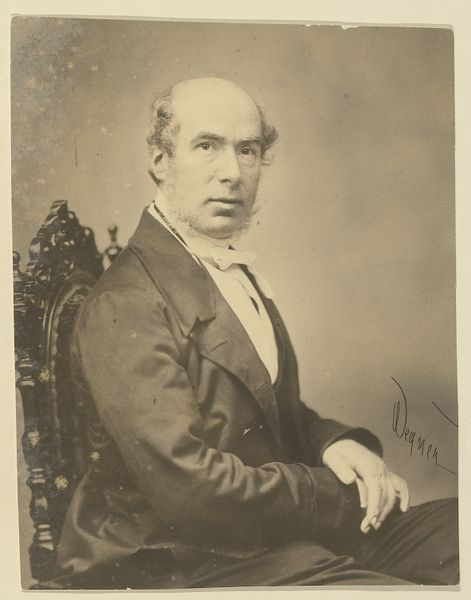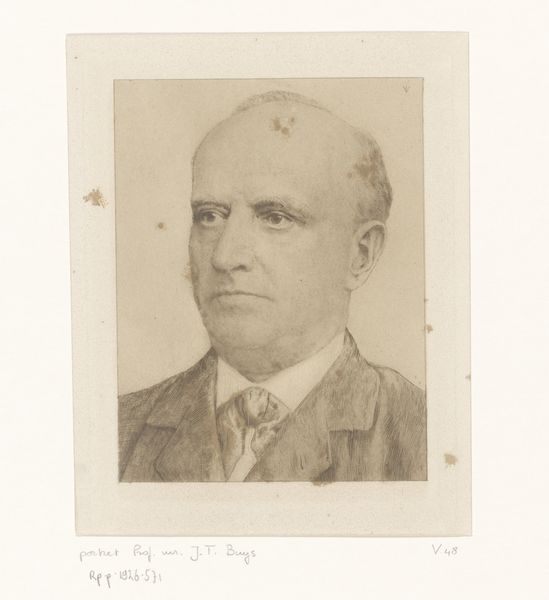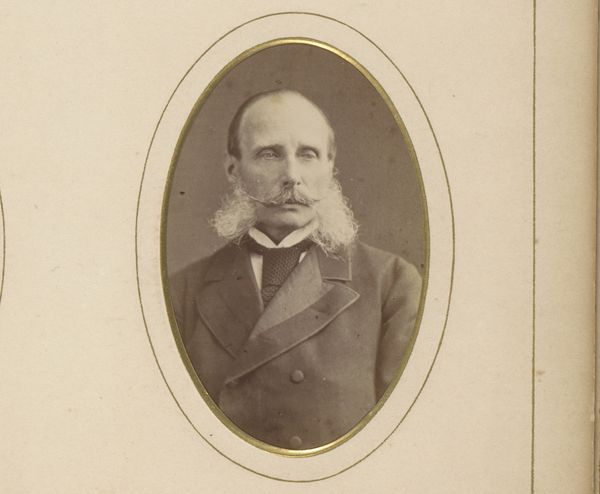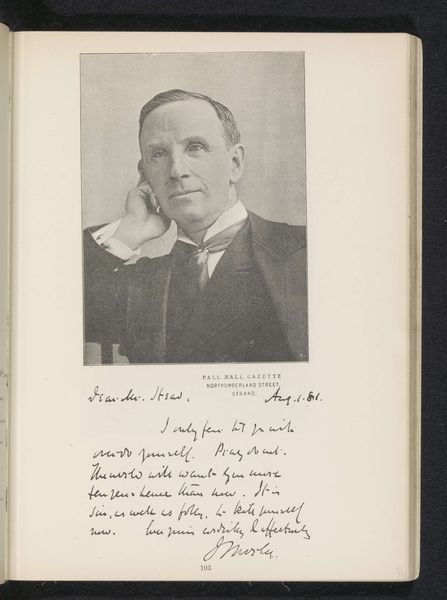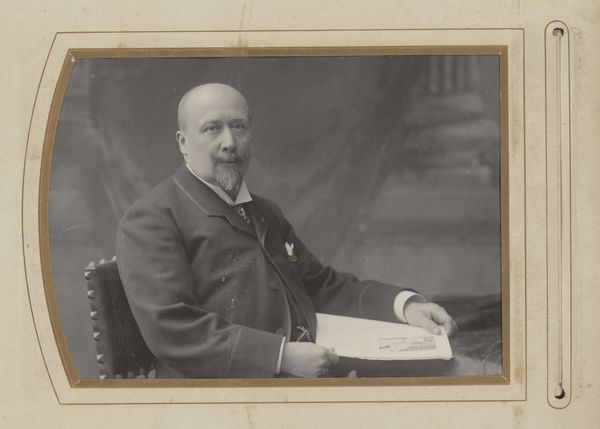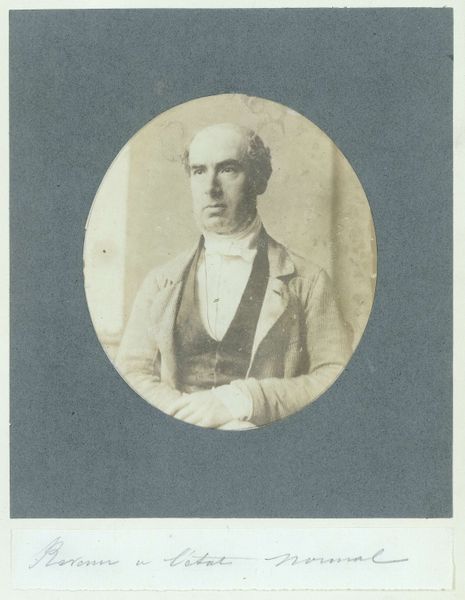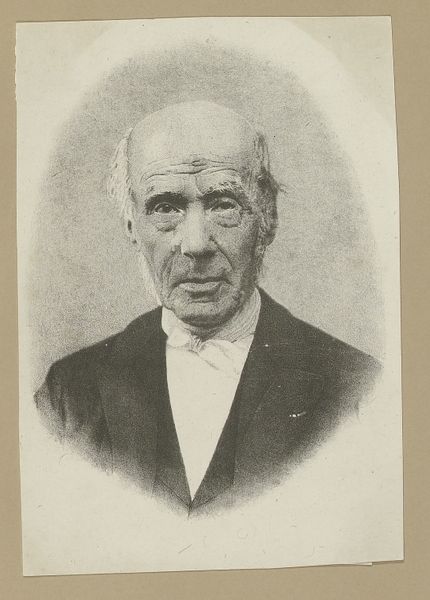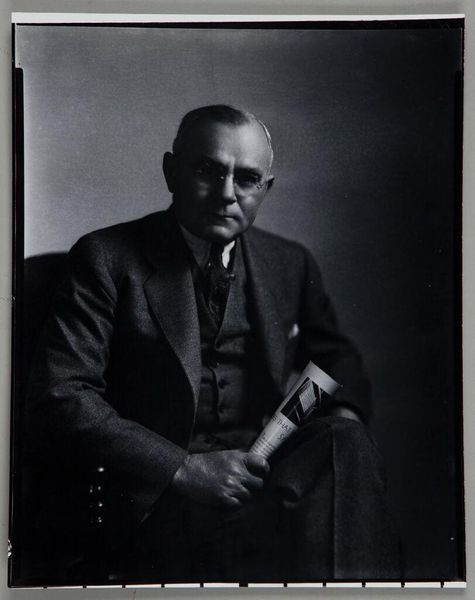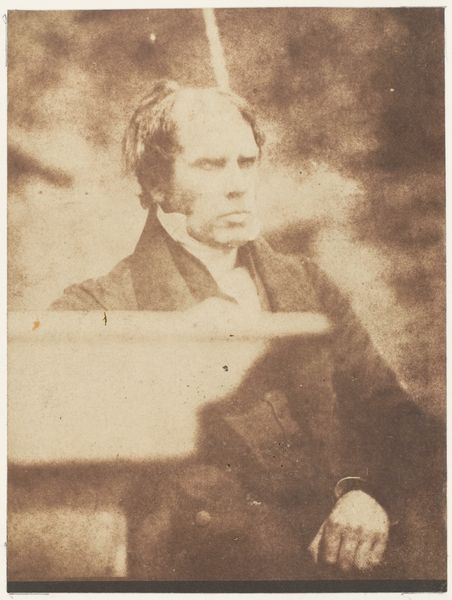
daguerreotype, photography
#
portrait
#
daguerreotype
#
photography
#
romanticism
Copyright: Public Domain
Curator: This daguerreotype, "Robert Paul, Commercial Bank," was created between 1843 and 1847 by the pioneering Scottish photographers Hill and Adamson. It is now part of the collection at the Metropolitan Museum of Art. Editor: My initial impression is of quiet authority, but also a profound sense of melancholic introspection. The sepia tones and soft focus contribute to a feeling of detachment, as though we are observing a moment frozen in time but already distant. Curator: The subject, Robert Paul, embodies the rise of the commercial class in 19th-century Scotland. Photography was relatively new, but already being used to depict social standing and project authority, which helped shape ideas around commercial success. Editor: Absolutely. Consider the subtle class signifiers present here; his carefully arranged attire and that glimpse of his workplace establish an implicit connection between his identity, occupation and social position. There’s this palpable air of controlled respectability—but that faraway look unsettles things. It prompts us to wonder what world this portrait truly constructs. Curator: Precisely, portraiture played a key role in creating visual markers of class in that era. This image acts almost like an early advertisement, even, subtly promoting the reliability of his establishment. However, the angle and subdued lighting soften any potential claims to complete objectivity. Editor: That contrast is precisely where it gets compelling, don't you think? There is so much left unsaid. What sociopolitical realities underpinned Robert Paul's financial standing? Did this prosperity benefit a select group, or was it part of more equitably distributed societal transformation? What were the power dynamics? Curator: It also makes me consider the influence of the new technology of photography itself. To commission such a portrait spoke to a sense of confidence in this still-developing medium, aligning Paul's professional image with innovation and modernity. The daguerreotype was so much about verisimilitude. Editor: So in its essence, a portrait becomes a record not only of its sitter's surface appearance but also reveals glimpses into its time: politics, values and collective narratives all become embedded within each layer. Looking through this image we might explore avenues towards critical dialogue, which enable alternative perspectives and richer understandings surrounding identity, economy and early commercial spaces within modernity. Curator: An intriguing observation, I agree.
Comments
No comments
Be the first to comment and join the conversation on the ultimate creative platform.
